Glory of Paradise
Probable preparatory sketch for fresco
Oil on canvas
87 x 60 cm.
Framed 97 x 79 cm.
This fascinating canvas, depicting the subject of the Glory of Paradise, follows a descriptive structure that would leave us to assume that we are dealing with a valuable preparatory sketch, a study for a larger altarpiece or even more likely for a more complex fresco; this would therefore suggest that the final work was intended for the decoration of the main bay of a private chapel.
Although it is difficult to identify its author, we can, however, circumscribe its work within the Roman school of the late seventeenth or early eighteenth century, linking it to the illustrative models typical of this period, influenced by the compositions crowded with small figures that are influenced by the Mannerist tradition of authors such as Cavalier d'Arpino, Belisario Corenzio or Scipione Compagno.
Iconographic description:
Let us now enter into the details of the composition, overlooked by the figure of Christ seated on the clouds and surrounded by the Virgin and St. Joseph; between them a Saint in armor clutches to himself the globe surmounted by the cross: it could be St. Alexander and given the importance of its location be the Saint to whom the composition is dedicated.
Radiating through the scene is a powerful divine light, coming from Christ the Judge portrayed in the center of the equilateral triangle, whose rays serve to scan the space and compose hierarchical bands.
Extremely fascinating then is the reading of the painting, which, starting from this very beam of light, shows in the central part the array of angels with trumpets and the instruments of the Mass. Also detectable are the four archangels: Michael, Gabriel, Raphael (below whom is Tobiah, his protégé) and Uriel.
On either side of this riot of angels we can easily identify the most representative characters of the New Testament, illustrated according to a hierarchy of different orders.
Starting from the top St. John the Baptist, with the lamb and the long staff surmounted by a small cross, then we find the two 'wise' rulers St. Catherine with King Solomon. According to the order dictated by the hierarchy of the angels we then locate, on the right side, the group of the four evangelists with the books of the Gospels in their hands: on the other St. John with the eagle, followed by St. Luke flanked by the ox, then St. Matthew with the angel, and finally the young St. Mark, with his lion.
We also see, inserted from between them, the two great apostles, St. Paul with the book of his letters and the sword of martyrdom at his side and St. Peter, recognizable by the great key to the kingdom of heaven and his letter.
Returning to the left side, we find Moses with the tablets of the law and horns of light on his head and Elijah on the chariot of fire. At their side, dressed entirely in white, may be Saint Lucy.
Below are then recognizable the four "major prophets," precisely Isaiah, Jeremiah, Ezekiel, and Daniel, with open books, while at the same height but on the opposite side we can identify the 'doctors of the Church,' precisely St. Augustine and St. Ambrose with bishop's mitres, St. Gregory the Great with the triregnum, and finally St. Jerome, in hermit's garb intent on translating the Bible.
Finally, we see the lower band, which on the left sees the four reigning saints, first of all the Roman emperor Justinian, then St. Nicasius de Burgio, St. Louis IX of France, and St. Louis of France, great defenders of the Christian faith.
On the right side, on the other hand, it is possible to identify the great founders of the main religious Orders, St. Benedict, St. Francis and St. Dominic, followed by the two founders of the Order of the Holy Trinity, St. John de Matha and Felix of Valois, recognizable by their white robes with a red and blue cross on their chests.
ADDITIONAL INFORMATION:
The painting is complete with a pleasant frame and is sold with a certificate of authenticity and descriptive iconographic card.
We take care of and arrange transportation of the purchased works, both for Italy and abroad, through professional and insured carriers.
Contact us for any information, we will be happy to answer you.
Follow us also on:
https://www.instagram.com/galleriacastelbarco/?hl=it
https://www.facebook.com/galleriacastelbarco/






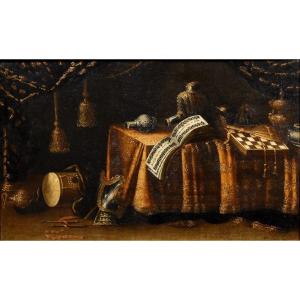



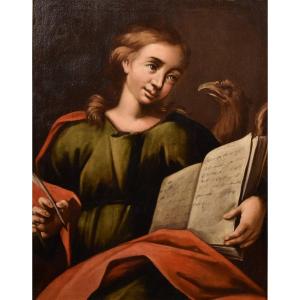
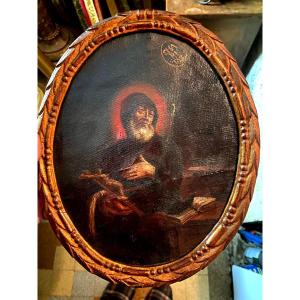


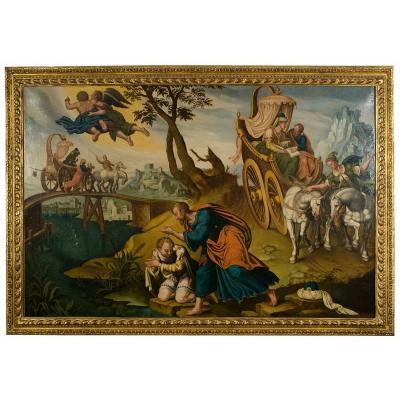
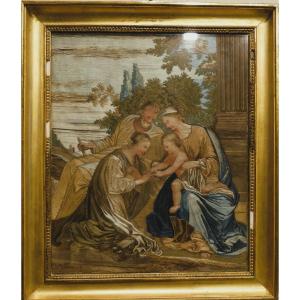



 Le Magazine de PROANTIC
Le Magazine de PROANTIC TRÉSORS Magazine
TRÉSORS Magazine Rivista Artiquariato
Rivista Artiquariato












